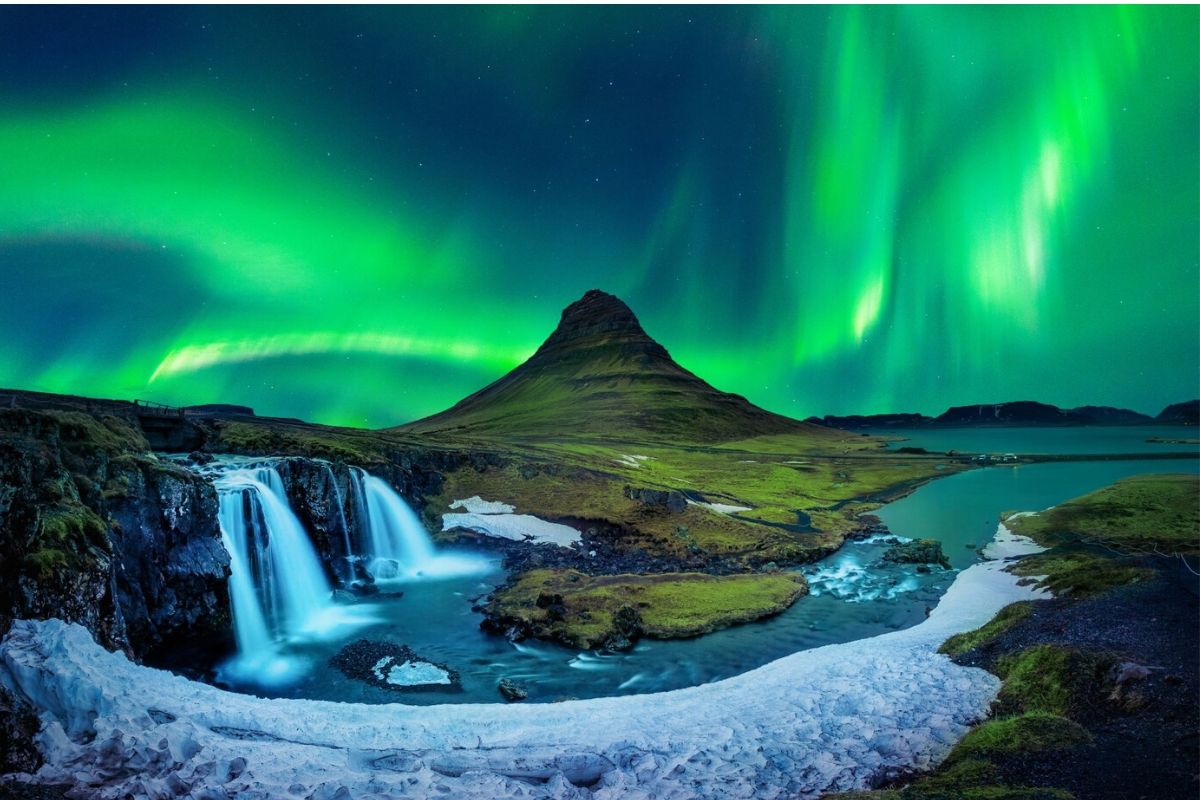

Some excursions are geared to photographing the northern lights (with expert guides), while other tours might combine aurora spotting with another activity, such as soaking in a geothermal pool.įor those who want the stress and fuss taken out of their trip to Iceland, a northern lights vacation package that includes accommodation, flights, and tours might be the perfect option. That way, they know that their experienced guide will take care of them in terms of where to go, what to look for, and even throw in a few fun facts about the history, folklore and science of the aurora borealis. However, those with limited time in Iceland often opt to join a guided northern lights tour. It’s a great excuse to venture a little off the beaten track and find a good spot to enjoy the show. So now that you know what you’re looking for, and what to expect, you might decide to rent a car and go aurora hunting on your own.
#Northern lights iceland how to
How to hunt for the northern lights in Iceland


The fact that the appearance of the aurora borealis can change so much within the course of a single night makes it all the more mesmerizing, and you’ll likely stay out well into the night to enjoy this majestic sight. Later in the night it may develop into rippling streamers, pulsating globes, a corona of rays that appear from a point high in the sky, or as scattered patches of light. The aurora often first appears as an arc, stretching from east to west across the sky. Geomagnetic activity is difficult to predict far in advance, but there are several apps and websites, including the Icelandic Meteorological Office, that report on the KP index forecast a few days ahead. There is a complex science underpinning the northern lights, and there are many factors at play when the lights make an appearance. The higher the KP index, the better your chances of seeing lights, and the more likely you are to see the pink and purple colors, alongside the green, light up the sky. This index indicates the most likely time that you can see the northern lights in Iceland and how strong they will appear to the eye. If you need your beauty sleep, you'll find that many hotels offer an aurora alarm service, calling your room to wake you if there are hints of color in the sky – so that might help you decide where to stay in Iceland to see the northern lights.Īrguably the most important factor for seeing the aurora borealis is geomagnetic activity, measured by the KP index. Generally, 9pm until 2am is prime viewing time, and the lights tend to get more visible as the night goes on, so the show can be a long but extremely rewarding one. The time of night can also have an impact on how easy it is to see the aurora in Iceland. Heading away from light pollution will maximize your chances of a glimpse, although the very brightest aurora borealis can be seen from cities and even through thin clouds.
#Northern lights iceland full
A full moon can significantly brighten the sky, making it more difficult to enjoy the show, so it’s ideal if the moon is smaller on the night you want to go looking. However, there are certain conditions that you need in order to be able to see them at all.įor starters, dark, preferably clear skies and a good KP index score are crucial. The northern lights are a fickle beast – often taking even the most avid hunters by surprise with their appearance and/or intensity. What weather and conditions do you need to see the northern lights in Iceland? Instead, we suggest planning a trip in the fall or winter to enjoy this beautiful natural phenomenon. This typically occurs around March 20 and September 23.įrom May to July, Iceland enjoys round-the-clock daylight thanks to the midnight sun season, meaning it never gets dark enough to see the lights during these months. Indeed, the aurora borealis are often strongest around the time of the equinoxes, when the sun is directly above the Earth’s equator and day and night are about the same length. In Iceland, the official northern lights season runs from October until March, but the lights have been spotted as early as August and as late as April. What is the best time of year to see the northern lights in Iceland?


 0 kommentar(er)
0 kommentar(er)
